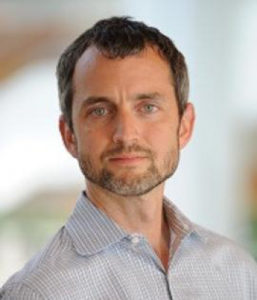In ECON 47: “Media Markets and Social Good,” award winning economist and economics professor Matthew Gentzkow hopes to help students appreciate and analyze how the media relates to social good.
According to Gentzkow, the class is designed to introduce undergraduates to research on the social effects of media markets and to provide them with experience working with a range of tools. Prior to ECON 47, Gentzkow had not previously taught undergraduates.

Gentzkow said that earlier economics classes tend to focus primarily on theory, and elective courses on specific topics are typically taken by students during junior or senior year. He hopes that ECON 47 provides an earlier exposure to the type of real work that an economist does in the field.
“I’m hoping that this is a class that will really get some students excited about the possibility of doing economics and more social science,” he said.
The five-unit class is being taught for the first time this spring. Gentzkow began planning the course in Aug. 2017 with the course’s current teaching assistants, third-year economics Ph.D. student Nano Barahona and fourth-year economics Ph.D. student Camilo Castillo.
According to Gentzkow, the first part of ECON 47 focuses on media bias and the sociopolitical issues surrounding the media. Students then delve into the social impact of advertising and methods used to measure its effects while also examining the broader social impacts of media and its effects on children and on crime.
Later in the quarter, students will explore the role of the media outside of the United States in non-democratic countries, and they will investigate the role of traditional and social media in regime change, corruption and censorship.
“We wanted to put all those pieces together around this broad theme of how the media impacts social welfare and how policy [can] make it better,” Gentzkow explained.
One way in which the students engage with the course’s topics is by listening to different guest lecturers featured throughout the quarter. Last Wednesday, Mike Bailey, a data science manager at Facebook, spoke to the class on misinformation in the media. Following his talk, he hosted a question-and-answer session with the students.
Economics major Melodie Powell ’19 particularly enjoys these lectures and felt that hearing from Bailey was especially relevant given current concerns about how misinformation in the media influences society.
“It’s an experience you can only get at Stanford to be able to be at the forefront and to actually feel like you’re at the middle of what’s happening,” she said.
Students engage with the course’s main themes through four major assignments, the first of which is oriented towards exploring theory.
“It is very important to understand how people process information and how they transform information into beliefs,” Barahona said. “For that, having a framework in which you can use math to discipline how you think about these ideas can be very useful. Probability theory is a very good tool to help mold this process.”
Students also work with social science tools and data to solve problems. The second assignment involves using machine learning tools and text analysis to measure the partisanship of media content.
The final two major assignments are focused on how to do causal inference in economics.
The primary software tool used by students in the problem sets is the R programming language. Gentzkow explained that the class is aimed at students from both technical and non-technical backgrounds, so no prior experience with coding is necessary.
Powell, who is interested in working in the media and entertainment industry someday, looks forward to using this new tool.
“Next week we’ll start working with R and I’ve never used R before, so I’m really excited to do that,” she said.
In planning the course, Barahona said that he, Gentzkow and Castillo aimed to create informative but also manageable problem sets. He says that so far, the students have been handling them well.
“The students often go through the material by themselves and they usually come to us with very specific, well-oriented questions,” Barahona explained. “You just need to guide them a little bit and they will know where to go because they’re so engaged with the assignment.”
Contact Ruth-Ann Armstrong at ruthanna ‘at’ stanford.edu.